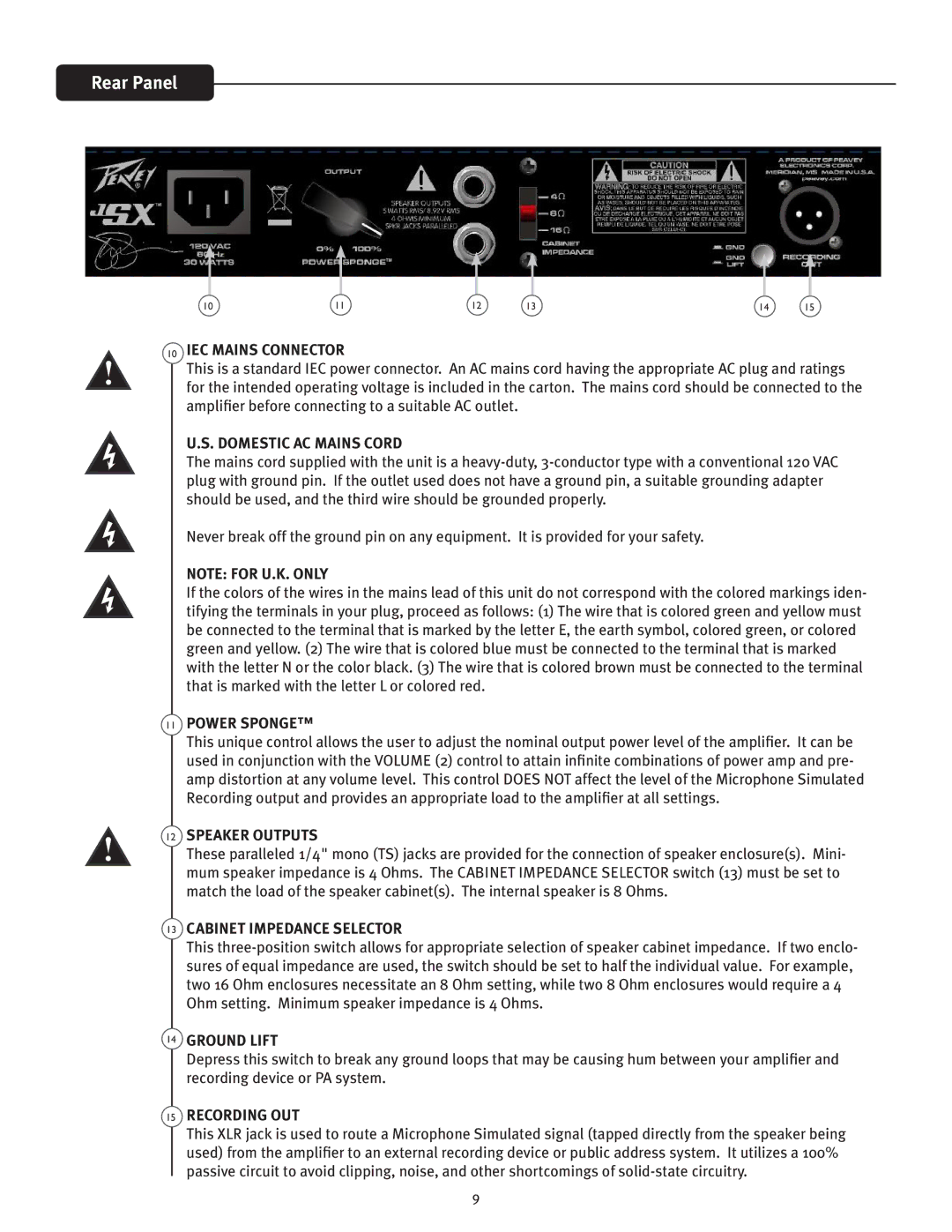
Rear Panel
10 | 11 | 12 | 13 | 14 | 15 |
10IEC MAINS CONNECTOR
This is a standard IEC power connector. An AC mains cord having the appropriate AC plug and ratings for the intended operating voltage is included in the carton. The mains cord should be connected to the amplifier before connecting to a suitable AC outlet.
U.S. DOMESTIC AC MAINS CORD
The mains cord supplied with the unit is a
Never break off the ground pin on any equipment. It is provided for your safety.
NOTE: FOR U.K. ONLY
If the colors of the wires in the mains lead of this unit do not correspond with the colored markings iden- tifying the terminals in your plug, proceed as follows: (1) The wire that is colored green and yellow must be connected to the terminal that is marked by the letter E, the earth symbol, colored green, or colored green and yellow. (2) The wire that is colored blue must be connected to the terminal that is marked with the letter N or the color black. (3) The wire that is colored brown must be connected to the terminal that is marked with the letter L or colored red.
11POWER SPONGE™
This unique control allows the user to adjust the nominal output power level of the amplifier. It can be used in conjunction with the VOLUME (2) control to attain infinite combinations of power amp and pre- amp distortion at any volume level. This control DOES NOT affect the level of the Microphone Simulated Recording output and provides an appropriate load to the amplifier at all settings.
12SPEAKER OUTPUTS
These paralleled 1/4" mono (TS) jacks are provided for the connection of speaker enclosure(s). Mini- mum speaker impedance is 4 Ohms. The CABINET IMPEDANCE SELECTOR switch (13) must be set to match the load of the speaker cabinet(s). The internal speaker is 8 Ohms.
13CABINET IMPEDANCE SELECTOR
This
14GROUND LIFT
Depress this switch to break any ground loops that may be causing hum between your amplifier and recording device or PA system.
15RECORDING OUT
This XLR jack is used to route a Microphone Simulated signal (tapped directly from the speaker being used) from the amplifier to an external recording device or public address system. It utilizes a 100% passive circuit to avoid clipping, noise, and other shortcomings of
